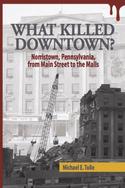The “silver lining” in our five-years-and-running Great Recession, we’re told, is that Americans have finally taken heed of their betters and are finally rejecting the empty allure of suburban space and returning to the urban core. read more »
Suburbs
Job Dispersion in Major US Metropolitan Areas: 1960-2010
The continuing dispersion of employment in the nation's major metropolitan areas has received attention in two recent reports. The Brookings Institution has published research showing that employment dispersion continued between 2000 and 2010, finding job growth was greater outside a three mile radius from central business districts between 2000 and 2010 in 100 metropolitan areas Note 1). read more »
US Suburbs Approaching Jobs-Housing Balance
Suburban areas in the US metropolitan areas with more than 1 million total regional population, once largely seen as bedroom communities, are nearing parity between jobs and resident employees. The jobs housing balance, which measures the number of jobs per resident employee in a geographical area has reached 0.89 (jobs per resident workers) in these 51 major metropolitan areas, according to data in the 2011 one-year American Community Survey. read more »
What Killed Downtown?
What Killed Downtown?: Norristown, Pennsylvania, from Main Street to the Malls
by Michael E. Tolle
For those of us who have grown dyspeptic on the over-indulged topic of the collapse of the American city center, Michael Tolle’s What Killed Downtown? Norristown, Pennsylvania, from Main Street to the Malls earns much of its anodyne appeal by straying from a commonly accepted convention in urban studies—that an analysis of the socioeconomic decline of a community should draw heavily upon socioeconomic variables. Isn’t there another way to get the point across? And more importantly, aren’t there other contributing factors? read more »
America's Fastest- and Slowest-Growing Cities
Since the housing crash of 2007, the decline of the Sun Belt and dispersed, low-density cities has been trumpeted by the national media and by pundits who believe America’s future lies in compact, crowded, mostly coastal and northern, cities. read more »
Chicago: Outer Suburban and Exurban Growth Leader
Greg Hinz at Crain's Chicago Business congratulates Chicago for its nation-leading population growth. Heinz also notes that the far suburbs also gained population strongly, but there had been losses in the areas between the two. He asks: "the question now is whether the area can prosper with a thriving core but sinking neighborhoods and inner-ring suburbs around it." read more »
In California, Don't Bash the 'Burbs
For the past century, California, particularly Southern California, nurtured and invented the suburban dream. The sun-drenched single-family house, often with a pool, on a tree-lined street was an image lovingly projected by television and the movies. read more »
America's Oldest Cities
One of the most important turning points in the social history of the United States occurred at the beginning of the 1940s. This is not about Pearl Harbor or the Second World War, but rather about the economic, housing and transportation advances that have produced more affluence for more people than ever before in the world. read more »
Time to Acknowledge Falling Private Car Use
The prospect of falling car use now needs to be firmly factored into planning for western cities.
That may come as a bit of a surprise in light of the preoccupation with city plans that aim to get people out of their cars, but it is already happening. And it is highly likely to continue regardless of whether or not we promote urban consolidation and expensive transit systems. read more »
Dispersion in the World's Largest Urban Areas
No decade in history has experienced such an increase in urban population as the last. From Tokyo-Yokohama, the world's largest urban area (population: 37 million) to Godegård, Sweden, which may be the smallest (population: 200), urban areas added 700 million people between 2000 and 2010. read more »
- Login to post comments



















